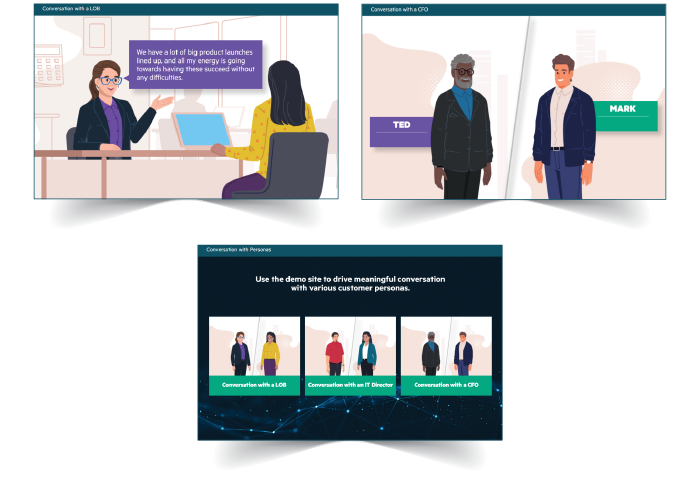As you move up the level of impact from learner evaluations, a level beyond learner evaluations is what learners can do after the experience. You can look to see what you’re achieving pre-determined performance objectives.
Ideally, you want to see if this performance is sustained and achieves an impact on the organization, but not all organizations are ready. In this case, the organization was looking to achieve a measurable increase in ability, not just a high rating.
Situation

The corporation here was a global technology firm. They produce recognized suites of technology solutions, integrating hardware and software into a coherent solution. In this case, they had a free offering as a competitive differentiator to clients, but sales staff were struggling to secure commitments. Thus, there was a desire to remedy this situation.
The goal was to certify the sales teams on the necessary components of locking in such deals. This included the ability to match the offering to different customers. A certification of the necessary skills was the target outcome.
Approach

Scenarios provide a rich way to convey the context as well as the necessary elements. To accurately comprehend the relationship between different customers and approaches, learners watched short scenarios of critical interactions. They were then quizzed about the nature of the interaction and the critical element in each.
These were supplemented by guided scenarios of critical interactions. Here, learners were asked to observe, analyze, and draw conclusions. For learning purposes, they were applying the knowledge as a step along the way to internalize that understanding.
The tone was moderate. The audience was such that humor could go awry, and a focus on outcomes was necessary.

Outcome

There was a learner rating, and the rating achieved was 4.6 out of 5, a good outcome. However, this wasn’t the important outcome, as ratings are unfortunately not as strong an indicator as would be desired.
In this case, learner success rate in accreditation was the desired focus. The course outcome was that 92% of learners achieved the accreditation rating. This demonstrated that the learners were demonstrating facility in the necessary skills. While this doesn’t necessarily mean an improvement in sales closures, it is indicative that learners had acquired the ability to deliver.
Also, this solution was recognized for efficacy in international competition.
In summary, this case study demonstrates the successful implementation of a strategic learning approach to enhance sales team effectiveness at a global technology firm. With a commendable learner rating of 4.6 out of 5, the spotlight is on the remarkable 92% accreditation rate, showcasing a significant improvement in learners’ practical skills. This accomplishment not only signifies the program’s impact but also earns recognition for its efficacy in international competition. For more insights into effective learning impact strategies, download our ebook, Designing for Learning Impact: Strategies and Implementation, and explore how to propel your organization towards improved outcomes and sustained success.



















